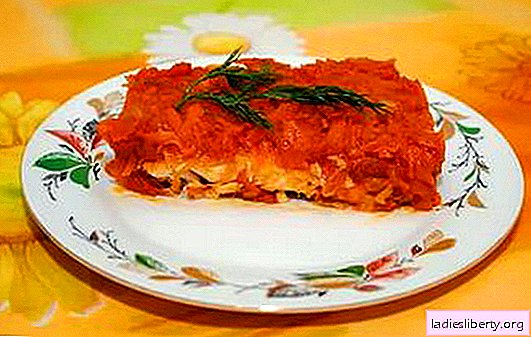
Kind Primrose (Primula) from the family of primroses (Primulaceae) is one of the most numerous in the world flora. According to various sources, it is represented by 400-550 species, and new species of primrose are still being discovered by botanists. Most of them are grown in Asia, the Himalayas and western China - up to 300 species can be found there in nature. Another 33 species will grow in Europe, about 20 species in North America, and several species grow in Africa, South America and Arabia. One species (imperial primrose - Primula imperialis) can be found on the island of Java.
The name of the primrose is translated from Latin as "first", and it is no accident, because it is the primrose that is the first bright decoration of the spring garden, dazzlingly playing against the black earth. And with a successful selection of species and varieties of this plant, you can admire the flowering of primroses almost until mid-summer, and some of them are able to bloom even repeatedly, decorating the garden or courtyard with bright strokes of their inflorescences in the autumn months.
The most common types of primrose include the following: spring primrose (P. veris), ear-shaped primrose and dentate primrose - they bloom in May; Japanese primrose - blooms in May and June; Primrose Julia - blooms twice, in May and August, but can remain decorative until late autumn.
Primrose - growing and care
The conditions for growing primroses are determined by their species affiliation and origin. For some, you should choose open areas, for others, shading among bushes and trees is more suitable. However, for all types of primrose, when choosing a place for planting, it is better to ensure their shading at noon. That is, it is better to give preference to a shady corner among the trees, or a flowerbed, which is lit by the sun only in the morning, or, when grown on a rocky hill, its eastern, northern or western side.
An important part of primrose care is the watering regime, since in nature they grow on moist soils. The best option would be to ensure such conditions under which the flowers will receive enough moisture, but without stagnation of water. Especially primrose need a lot of moisture in the spring.
Soils for growing primroses need loose, nutritious, able to retain moisture well. On heavy clay soils primrose does not grow. In extreme cases, they can be improved by adding sand (a bucket per 1 sq. M.), Vermiculite, chopped sphagnum moss, as well as applying organic fertilizers (up to 20 kg per 1 sq. M.), Or replace 20 cm of the top soil layer cooked nutrient mixture.
Organic fertilizers are also applied to light but not rich in nutrients soils (up to 20 kg per 1 sq. M.). First of all, it is decomposed humus, compost or leafy land, weathered peat, which can not only enrich the soil with nutrients but also improve its structure and water regime. In order for the plants to bloom magnificently, phosphoric, potassium and nitrogen fertilizers can be added to the soil mixture.
Also, the plant should be fed with phosphorus-potassium fertilizers during the growing season, at least three times. First, in the early spring, then after 2-3 weeks, and finally in August.
Primrose - transplant and reproduction
Over 3-4 years, the primrose bushes grow, and so that new rosettes do not squeeze each other and the plant does not weaken its flowering, they are planted, divided into new bushes. It is preferable to do this in August, so that new plants have time to take root before the onset of cold weather.
In addition to division, primrose can be propagated by seeds and rooting of axillary shoots.
The optimal time for sowing seeds is from November to December, but in principle they can be sown year-round. For good germination, sowing should be kept at a temperature of 16 ° C to 20 ° C in conditions of high humidity and good light. If these requirements are observed, shoots should appear in 10-12 days, then the air temperature and humidity can begin to gradually decrease. In March-April, seedlings should be transplanted into small pots, followed by transplantation into open ground. It must be remembered that primrose seedlings, compared to plants obtained by other propagation methods, grow more slowly and require enhanced care.
If the plant has one rosette of leaves or a weak root system that does not allow to divide the bush, it is propagated by rooting axillary shoots. To do this, having separated at the base of the root neck of the petiole of the leaf with the kidney and part of the shoot and shortening the leaf blades by half, the stalk is planted in a planting mixture of deciduous land and coarse river sand. In order for such a stalk to take root, it is necessary to provide it with a content in a bright room, but away from direct sunlight, at a temperature of 16 ° C to 18 ° C and moderate soil moisture. Over time, such buds will give shoots with 3-4 leaves. They should be planted in 7-9-centimeter pots, and then, when favorable weather conditions occur, transplanted into open ground.
Primrose - Diseases and Pests
Most often, the primrose can be affected by diseases such as rot of the stems and root of the neck, rust, white rust, bacterial leaf spot, anthracnose, powdery mildew, jaundice, cucumber mosaic and spotted tomato wilting viruses, as well as pests: leaf, stem and gall nematodes, aphids, weevils, spider mites, slugs, beetles, fleas, etc.
The most dangerous for primroses are the spotting caused by the fungus Ramularia cercosporella. They can appear in late spring - early summer with rounded or angular spots, which first have a pale color, and then become gray or brown with a yellowish border. Since mid-summer, these spots are covered with gray or white bloom, the affected leaves dry out, the plant ceases to bloom. To combat this disease, diseased leaves should be cut off and destroyed, and the remaining plants should be treated with a 2-nd solution of fundazole, or a 0.2% topsin solution, or a 1.5% cineb solution. It is also advisable to use Bordeaux liquid (1%), copper chloroxide (0.5%). Spraying plants should be carried out in the spring and after flowering. For autumn preventive spraying, nitrafen is used (1%).
Comments











